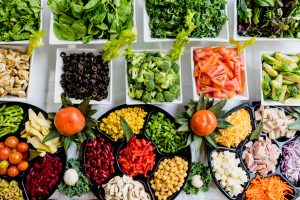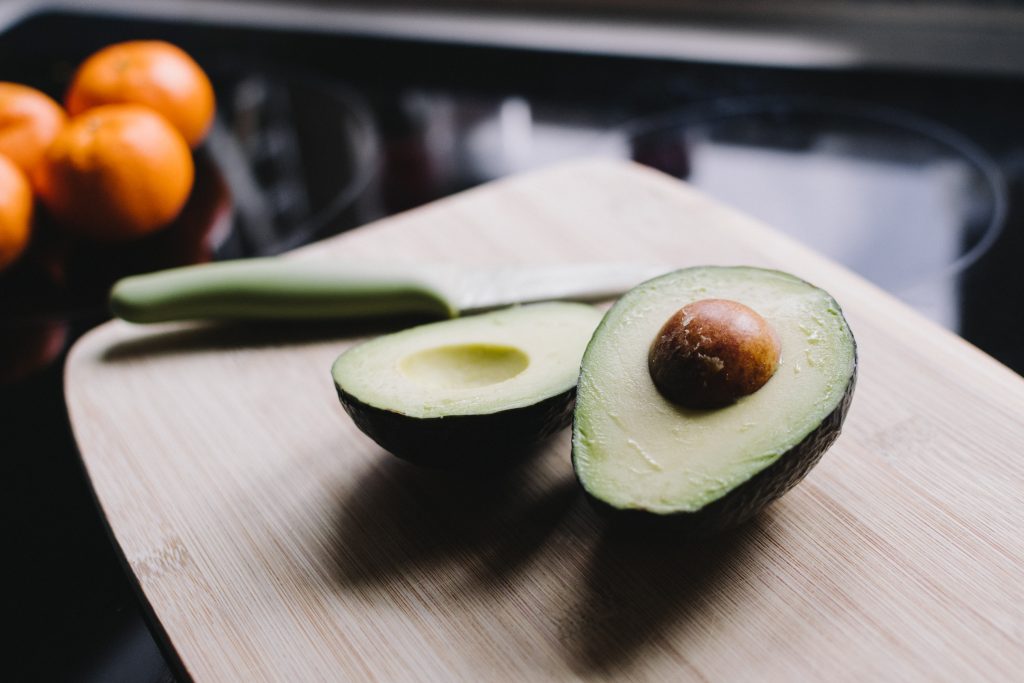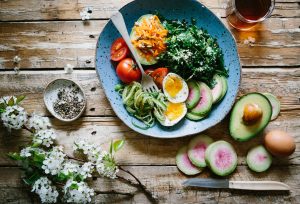Paleo vs Keto Diet: Which Diet Should You Choose?
In today’s world of accessible information, it can feel overwhelming to wade through all of the facts and opinions to figure out which diet works for you. If you listen in on healthy eating podcasts or pick up a health magazine, you’ll find that today’s top two “trending” diets are keto and paleo. Both claim to help dieters manage their weight and reach “optimal” health, but they take very different approaches to achieve these results. If you’ve been looking for a smaller waistline, better brain function, or sounder sleep, how do you pick the one that’s right for you?
What is Paleo?
The paleo diet is coined after the Paleolithic era, a period very early in the development of the human race and a time when humans were still hunting and gathering to survive. The idea behind this diet is to eat what humans evolved to eat, and as a result, following a paleo diet requires the removal of all processed foods and added sugars from your plate, as well as the elimination of all grains and legumes.
But hold up! Grains and legumes are plants, so shouldn’t they be allowed on paleo?
 No. That’s because humans didn’t eat grains and legumes during the Paleolithic era. In fact, as a species we only started eating grains and legumes after the genesis of farming. Once we domesticated animals for dairy, meat, and farming production, we had to start growing the food to feed them. And, you guessed it – farming animals get a majority of their feed from grains and legumes.
No. That’s because humans didn’t eat grains and legumes during the Paleolithic era. In fact, as a species we only started eating grains and legumes after the genesis of farming. Once we domesticated animals for dairy, meat, and farming production, we had to start growing the food to feed them. And, you guessed it – farming animals get a majority of their feed from grains and legumes.
Both of these food groups are actually toxic to the human digestive tract in their raw, natural state. Grains and legumes are the “fruit” that certain plants use to reproduce. For example, if you plant a pinto bean, it will grow into a pinto bean plant. And because these parts of the plants are meant for reproduction, they come with their own defense mechanisms so they will not be easily destroyed by a hungry animal’s digestive tract.
Farming animals like cattle and horses evolved with a complex digestive system designed to break grains and legumes down into non-toxic components in response to the plants’ defenses. Humans, however, did not.
How are we able to eat grains and legumes then if they are harmful to us? After we domesticated farming animals and had to take the time to plant their feed, we figured out methods to break down these foods – not with our stomachs, but with methods of food preparation. Traditionally, grains and legumes were only acceptable to eat if they were soaked and cooked thoroughly. This was a preparation process that took not mere hours, but days. Certain legumes could even take weeks! However, you won’t see many professional kitchens taking that time to prepare their grains and legumes today. Most, if not all, of the grains and legumes we eat today have not been broken down enough to lose their toxicity, and this is where the paleo diet comes in.
The paleo diet’s biggest aim is to remove the toxic foods we consume today and leave only the food stuffs we evolved to eat. By clearing out the excess toxins and junk, our bodies can get back to factory setting (which just shows how incredible our bodies are, in my opinion). We were designed to sleep through the night, carry our shelter and young for long stretches of miles, hunt, and survive wild animal attacks. We are a robust species, but we no longer give our bodies the right fuel to function at that optimal level. Instead, these days we are plagued with chronic illnesses like obesity, high blood pressure, and autoimmune conditions that never existed before the modern era. Paleo aims to wipe our slates clean and get us back to a thriving place of health through our food.
If we can’t eat foods like bread and hummus, what do we eat on a paleo diet? Vegetables, fruits, meat, and meat products. There are no restrictions on portion sizes, as the paleo diet has a heavy emphasis on satiating foods.

A Day On Paleo – Sample Meals
Breakfast: Avocado with a vegetable omelet cooked in olive oil
Mid-morning snack: Handful of nuts and dried fruit
Lunch: A big salad with root vegetables and chicken
Mid-afternoon snack: Sugar snap peas and celery with almond butter
Dinner: Tuna and string beans with a side of sweet potatoes
Dessert: Chocolate chia seed pudding with berries
Types of Paleo Diets
The paleo diet is meant to be a long-term, sustainable lifestyle. There are choices and habits that are encouraged to go along with this way of eating to restore your body’s natural healing capabilities. There are also restrictive eating guidelines that are based off of similar principles, but are not meant to be permanent ways of obtaining nutrition. These include the “AutoImmune Paleo” diet and the Whole30 elimination diet.
The Autoimmune Fix Within Paleo
There is an exclusive subset of guidelines for eating paleo called Autoimmune Paleo, or AIP for short. These guidelines are explicitly geared for treating autoimmune diseases. Autoimmune diseases are chronic conditions that are steadily affecting more and more of the western world. When you have an autoimmune condition, your immune system begins attacking its own tissues and cells, confusing your own body parts as a threat to your health. AIP is not a perfect fit for everyone, but it is recommended by functional doctors as a great way to use food as medicine to a body that is attacking itself.
AIP works to combat the high levels of inflammation and chronic leaky gut that most people with autoimmune diseases suffer from. This diet is more restrictive than paleo, as it cuts out nightshades (potatoes and peppers), nuts, eggs, and dairy. However, AIP is not a lifelong diet. Rather, it is a tool for people to give their bodies a break from the foods that are causing their inflammation so they can slowly add foods back in one at a time to see how they react.
Whole30: The Reset Program Within Paleo
If you look up “paleo recipes” on Pinterest, the top results will be for sweet treats that require no added sugar. Most people on the paleo diet still enjoy their sweet fixes by using honey or dates. However, the paleo reset program called Whole30 kicks that substitute to the curb for one month.
Whole30 was developed by certified sports nutritionist, Melissa Hartwig, and her husband.[1] It is a month-long protocol that gives your body a reset. This program is especially great for people with blood sugar issues who want to dive in to a program already made and waiting for them.
The Paleo Diet Might Be For You If:

- You eat a lot of packaged foods and want to change that.
- You can and want to control what is on your plate.
- You want a straightforward diet with clear parameters on what to eat.
- You have an autoimmune disease.
- You like the idea of getting back to nature.
On paleo, the goal is not to lose weight. The vast majority of dieters who switch from pre-packaged eating to paleo find that they drop a lot of inflammation first as their new diet is highly anti-inflammatory. Then slowly they drop weight from all of the high fiber and nutrient-dense foods they are eating. But paleo is geared more towards getting you “healthy,” not necessarily getting you thin.
The Ketogenic Diet
The ketogenic diet, nicknamed keto for short, is a diet that revolves around ketosis. Ketosis is a metabolic process where our bodies burn fat for fuel instead of glucose (as in sugar and carbohydrates). Keto focuses on measuring the ratios of the macronutrients you are eating to coerce your body into burning your own fat stores for energy.
Macronutrients (commonly shortened to macros) are the big nutrient components on our plates. There are only three types of macros: proteins, carbs, and fats. We know most animal meats are a good source of protein, that baked goods carry a lot of grams of carbs, and that the oils that accompany our foods are almost entirely comprised of fats. With the knowledge of how many macros are in which foods, we have to arrange our plate to match the right ratios our bodies need to enter ketosis.
To determine how much of each macro you need you have to take into account your age, weight, gender, and activity levels. The general rule of keto thumb is that you want to eat a lot of fats, between 60-80% of your daily food consumption, a moderate amount of protein, between 15-30%, and few carbs, between 10-20%. But again, the exact numbers should be calibrated to your body and lifestyle.

It is important to note that when we talk about fats we mean unprocessed fats, rather than processed. Oils like the canola oil or vegetable oil found in burgers and fries are not healthy fats. They are highly-inflammatory and are linked to the rise in many chronic heart conditions and diseases plaguing humanity today.[2] Healthy unprocessed fats include both saturated fats and unsaturated fats. These types of fats are easily obtained and not highly processed.
Saturated fats:
- Coconut milk
- Grass-fed butter
- Pasture-raised lard
Unsaturated fats (monounsaturated):
- Macadamia nuts
- Almonds
- Hazelnuts or filberts
Unsaturated fats (polyunsaturated):
- Butternuts
- Pine nuts
- Walnuts
The rule of thumb when choosing a fat source is to ask, “How easily was this made?” For instance, to make olive oil, you just physically press olives. But to make canola oil, you need heavy machinery and chemical processes to extract the fats from its source of rapeseeds. Rapeseeds are not an oily type of seed by any means, but by manufacturing it in the way we do it is a cheap option to create and buy in bulk.
One last thing about fats, is you want to avoid trans fats at all costs. This is the one fat that experts agree on as truly unhealthy, and the FDA has deemed unsafe. In order to successfully avoid trans fat, you not only have to look at the nutrition facts and look for 0 trans fats but also make sure the ingredients don’t contain anything that’s partially hydrogenated. This is because foods can contain up to 0.5 grams of trans fats and still be listed with “0 trans fats” on the label!
Eating healthy fats is of monumental importance on the keto diet, as the fats you eat are what trigger your body to use fat instead of sugar as a fuel source. When we eat foods that trigger an inflammatory response it is a signal from the body that it feels under attack, as that is what inflammation is, a response to an attack.
If you eat inflammatory fats, then your body will be too busy fighting the food you’ve eaten to flip into ketosis. However, when you eat the fats your body craves for satiety, you will switch into ketosis, and that comes with a myriad of benefits that extend beyond fat loss.
Benefits Claimed By the Keto Diet
- Clear thinking – no more brain fog
- More energy
- Better sleep
- A need for less sleep
- No food cravings
- Clear skin
- A halt on Alzheimer’s Disease [3]
- Reverse diabetes
- Stop heart disease
- And even stop or reverse cancer! [4]
Keto Roadblocks
A lot of first time keto dieters find it hard to make the transition for the first week or so for three reasons.
- We commonly eat the Standard American Diet (SAD), which puts carbs first and fats last. Most establishments adhere to this sort of portion ratio.
- The human body takes a week or so to figure out how to do ketosis and on your first run at keto you may have to stay strong to get over the initial hump of carb cravings. These cravings are signals from your body to eat more because, having run off sugar for so long, it doesn’t understand that fats are readily available. This doesn’t take long to fix, and each time you start the keto diet anew the hump of carb cravings gets smaller and smaller, if it appears at all.
 There is a set of symptoms akin to the flu that hits you the first time you try keto, coined “the keto flu.” It comes from dehydration and lack of nutrients but can be fixed with electrolytes, water, sleep, and nutrient-dense foods for the first week of your keto journey.
There is a set of symptoms akin to the flu that hits you the first time you try keto, coined “the keto flu.” It comes from dehydration and lack of nutrients but can be fixed with electrolytes, water, sleep, and nutrient-dense foods for the first week of your keto journey.
Types of Keto
Keto made its big stage debut in the form of the Atkins Diet, which turned calculating macros into a point system and emphasized high protein and high fat intake. The Atkins diet has a lot of bonus support features like pre-calculated recipes and a phasing system where you change your macro ratios (or points) depending on what week of the program you are in. However as the keto diet gained popularity, it evolved and rounded out into a diet that is much more functional in the day-to-day. The modern keto diet cares less about the calories you are eating and more about the ratios of macros you are eating.

A Day in Keto – Sample Meals
Breakfast: Sausage, vegetable omelet, and a cup of bone broth
Mid-morning snack: not hungry
Lunch: A massive salad with keto-friendly dressing
Mid-afternoon snack: not hungry
Dinner: Salmon and sautéed vegetables
Making Keto More Effective
If you Google “keto diet” you will come across a pairing of the keto diet called “keto/intermittent fasting.” Intermittent fasting is when you go more than twelve hours without eating. Since keto curbs cravings and gives dieters more energy it pairs very well with intermittent fasting to help a dieter reach a fat loss goal. By fasting for twelve hours or more (never more than twenty-four), we are giving our bodies enough time to digest our food fully and divert energy to other bodily functions, like muscle repair and detoxifying.
Leaders in the keto field, like Mark Sisson, swear by the high-yield effects of keto/intermittent fasting. Even more, they recommend breaking up ketosis with high carb days to shake up the body’s functions for the day and drive home an even higher fat-burn when they go back to ketosis.
The Keto Diet Might Be For You If:
- Weight loss is your primary concern
- You don’t mind, and you even like, a little bit of math to go with your meals
- You want to get creative in the kitchen
- You suffer from a disease attributed to high sugar intake
Keto Cautions
Doctors do not recommend using a keto diet every single day for long periods. While ketosis bears many health benefits, it is not a perfect operating system to use for the rest of your life. Likewise, keto dieters that go to the extreme of cutting out all carbohydrates can gravely injure themselves, as our brains need some form of sugar to function properly.
 Women, particularly menstruating and pregnant women, are also cautioned against going on the keto diet, especially for prolonged periods. Pregnant women need to consume enough carbs, fats, and proteins to grow an entire human being inside of them. This complex process does not leave room for the carb-restrictive keto diet.
Women, particularly menstruating and pregnant women, are also cautioned against going on the keto diet, especially for prolonged periods. Pregnant women need to consume enough carbs, fats, and proteins to grow an entire human being inside of them. This complex process does not leave room for the carb-restrictive keto diet.
Menstruating women need to break keto once a month to have their period. For the female body to undergo menstruation it needs enough carbs to trigger the release of the uterine lining. Women who do not break ketosis before their next scheduled period may find that their period comes late, if at all. When this happens it is because their hormones are in a static state, something the female body is not supposed to experience until menopause.
Which Diet Should You Choose?
The keto diet and paleo diet are both founded in our need to get away from the SAD, and it’s no secret that fast food and processed products are the leading cause in our rise in chronic ailments. Paleo proposes the solution of getting back to our roots by eating in accordance to our genetic makeup, while keto jumps up with a fast solution to our biggest epidemic, obesity.
Both of these diets offer a cleaner life and better way to be healthy, but at the end of the day, no one knows your body as well as you do. Armed with the knowledge of paleo and keto’s risks and benefits, you have everything you need to make the best decision for your personal health journey.